Photos of dark-skinned deities challenge India’s obsession with fairness
The unrelenting obsession with fair skin in India has been a subject of discussion for years. It has inspired campaigns, such Dark is Beautiful and #BinTheTube, which encouraged women to discard their fairness creams. And yet, the tendency to see fair people on television and in films, and to uphold them as the standard for beauty remains strong. Apart from popular culture, there is also a bias over skin colour in religious iconography. The myriad of Hindu gods and goddesses—Lakshmi, Ganesh, and Shiva—are often fair-skinned in their visual representations.
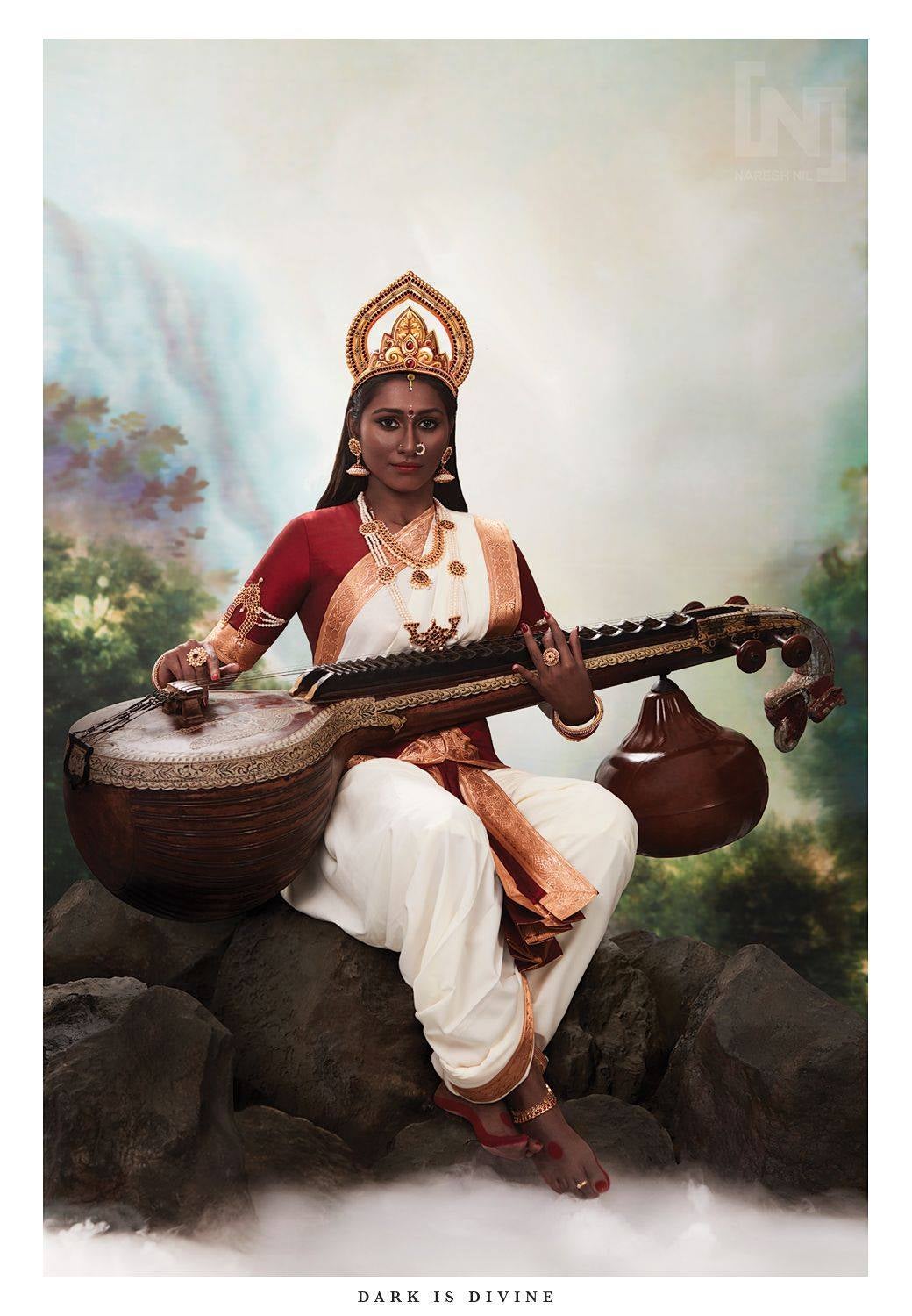

The unrelenting obsession with fair skin in India has been a subject of discussion for years. It has inspired campaigns, such Dark is Beautiful and #BinTheTube, which encouraged women to discard their fairness creams. And yet, the tendency to see fair people on television and in films, and to uphold them as the standard for beauty remains strong. Apart from popular culture, there is also a bias over skin colour in religious iconography. The myriad of Hindu gods and goddesses—Lakshmi, Ganesh, and Shiva—are often fair-skinned in their visual representations.
A Facebook photo series, titled Dark is Divine, by photographer Naresh Nil is subverting this narrative by portraying gods and goddesses as dark-skinned.
“Our idea was born out of this very notion of acceptance of fair as divine, which to me is more about normalisation of this concept in society,” said the Chennai-based photographer who worked on the project with creative director Bharadwaj Sundar. The two run a production house, Slingshot Creations, together.
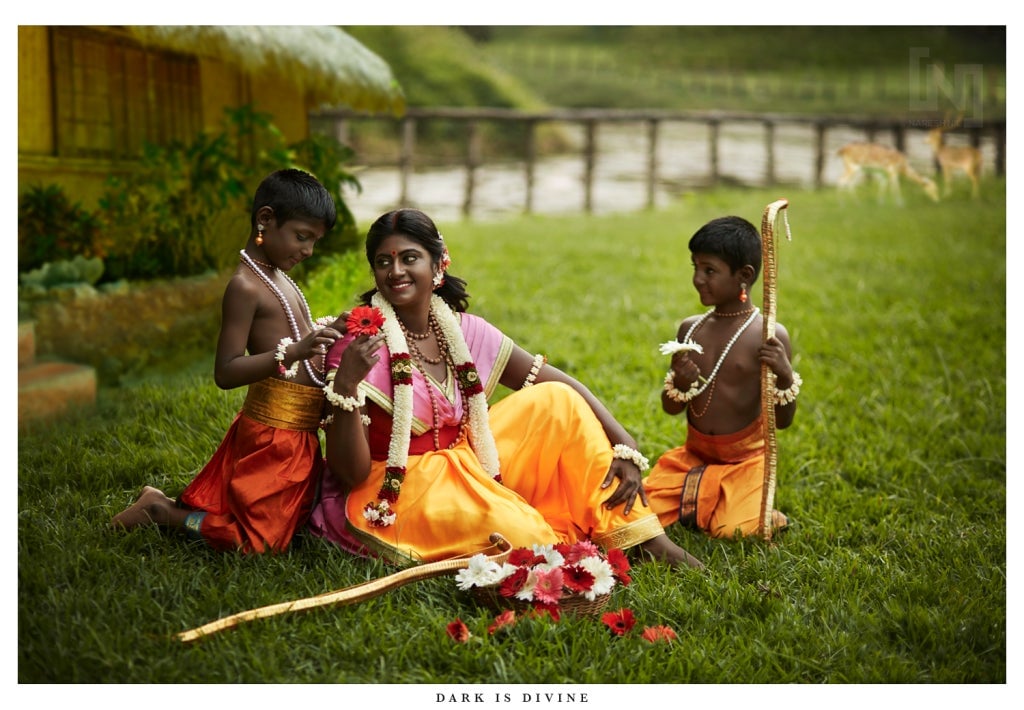
They started the project in September 2017 and, over two months, created almost seven portraits, including those of Bala Murugan, who is an avatar of Subramanya; Lakshmi, and Krishna as a child.
“We invited models with a dark or dusky skin tone,” said Nil. “The most essential consideration was whether the models themselves were comfortable in presenting and associating themselves with the representation of their skin tone.”
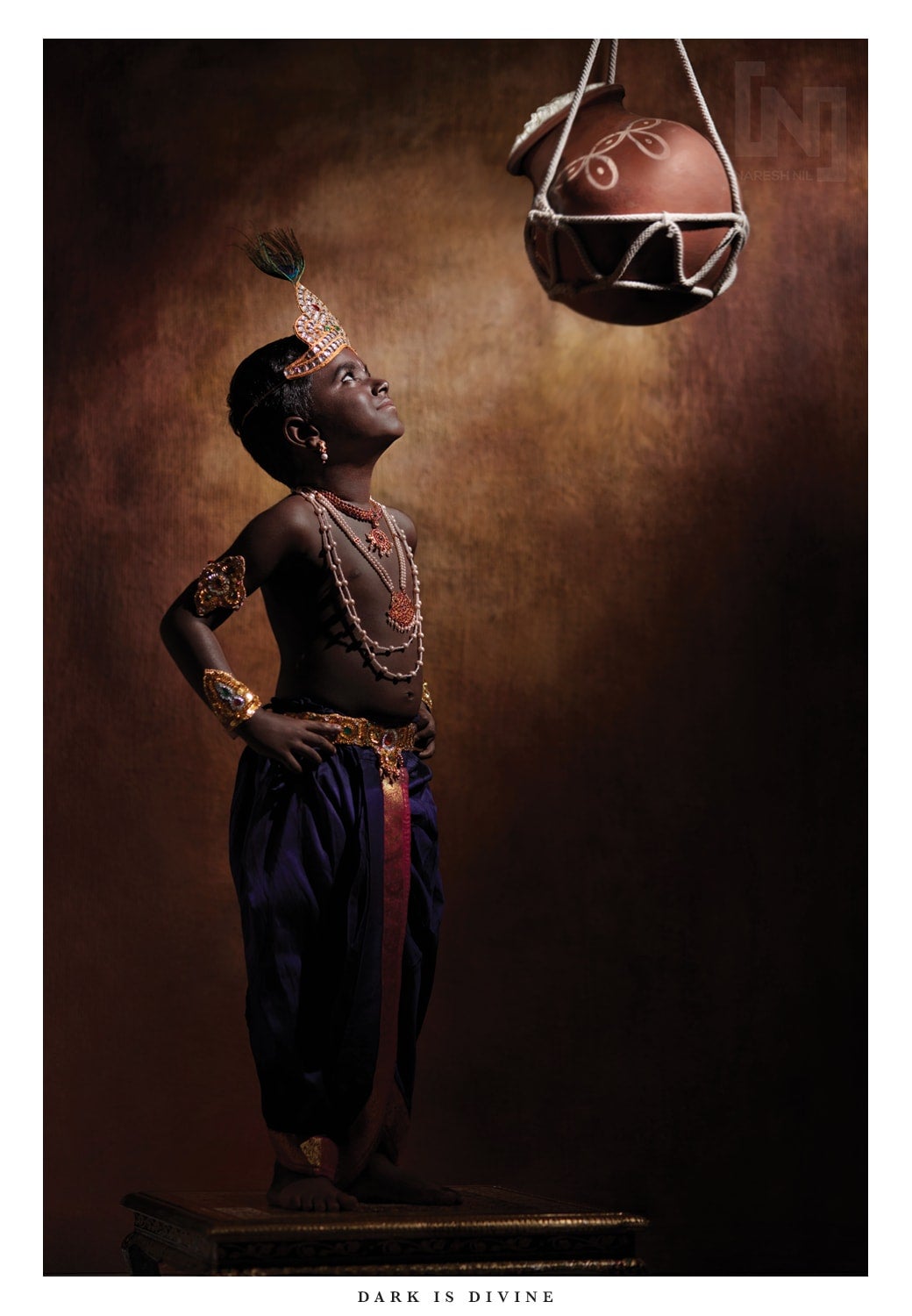
In Nil’s photographs, Durga is many shades darker than the one we meet during Durga Puja celebrations. A dark-skinned Shiva is depicted in deep meditation, while a dusky Sita is seen having a quiet moment with her sons, Luv and Kush.
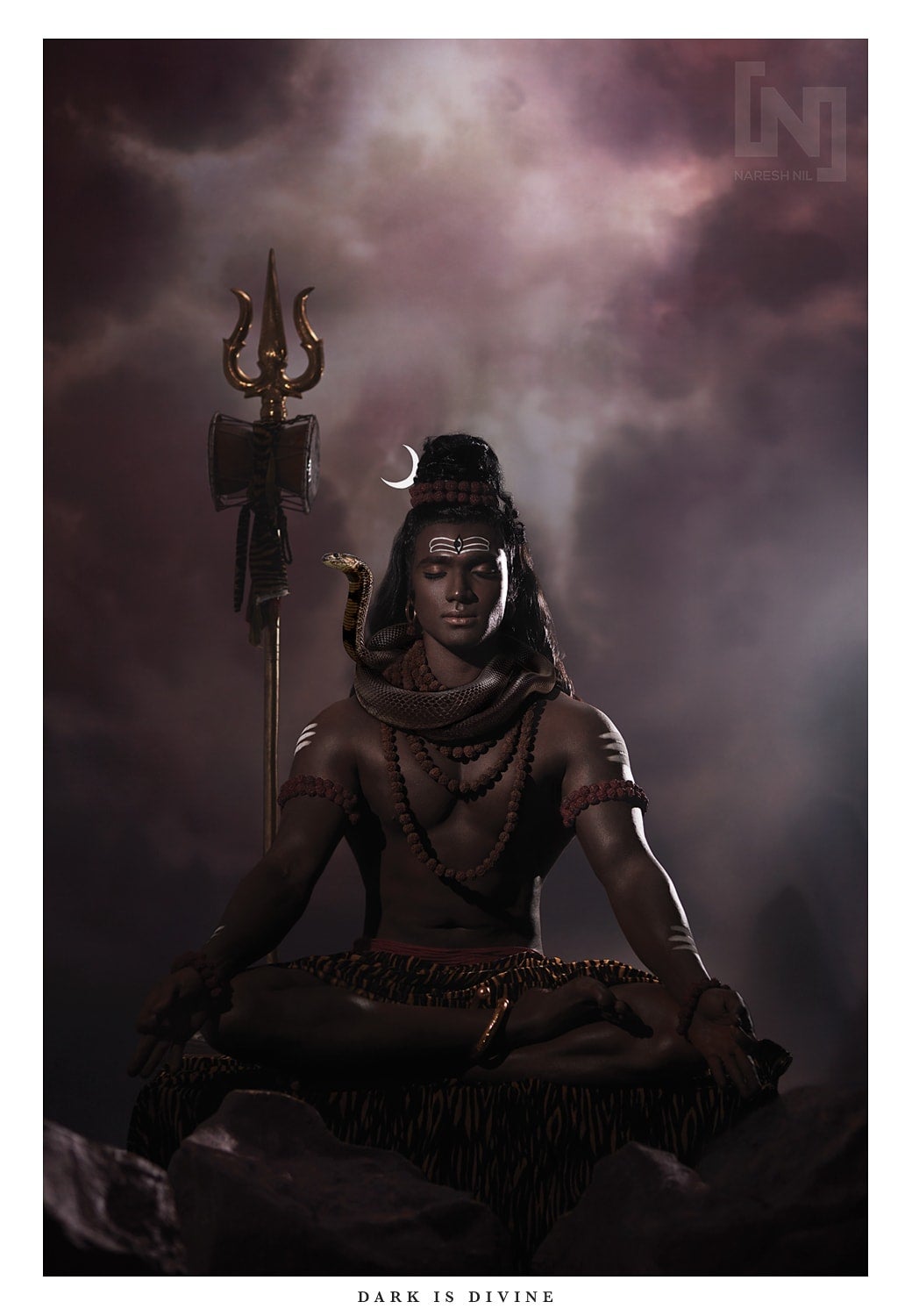
According to writer and mythologist Devdutt Pattanaik, the love for the fair complexion could be a hangover of our past. In an article for Verve magazine, he wrote:
“The nomadic tribes who came from the North West held the dark skinned settled communities of the subcontinent in disdain. Aryan gods like Indra were white. But this white supremacist flavor does not hold firm in the face of other evidence. Some say Shiva was a Dravidian god, a god of the settled communities—but he is described as Karpura-Goranga, he who is as fair as camphor. Some say that Vishnu and Ram are gods of the Aryan imperialists—but both are described as dark.”
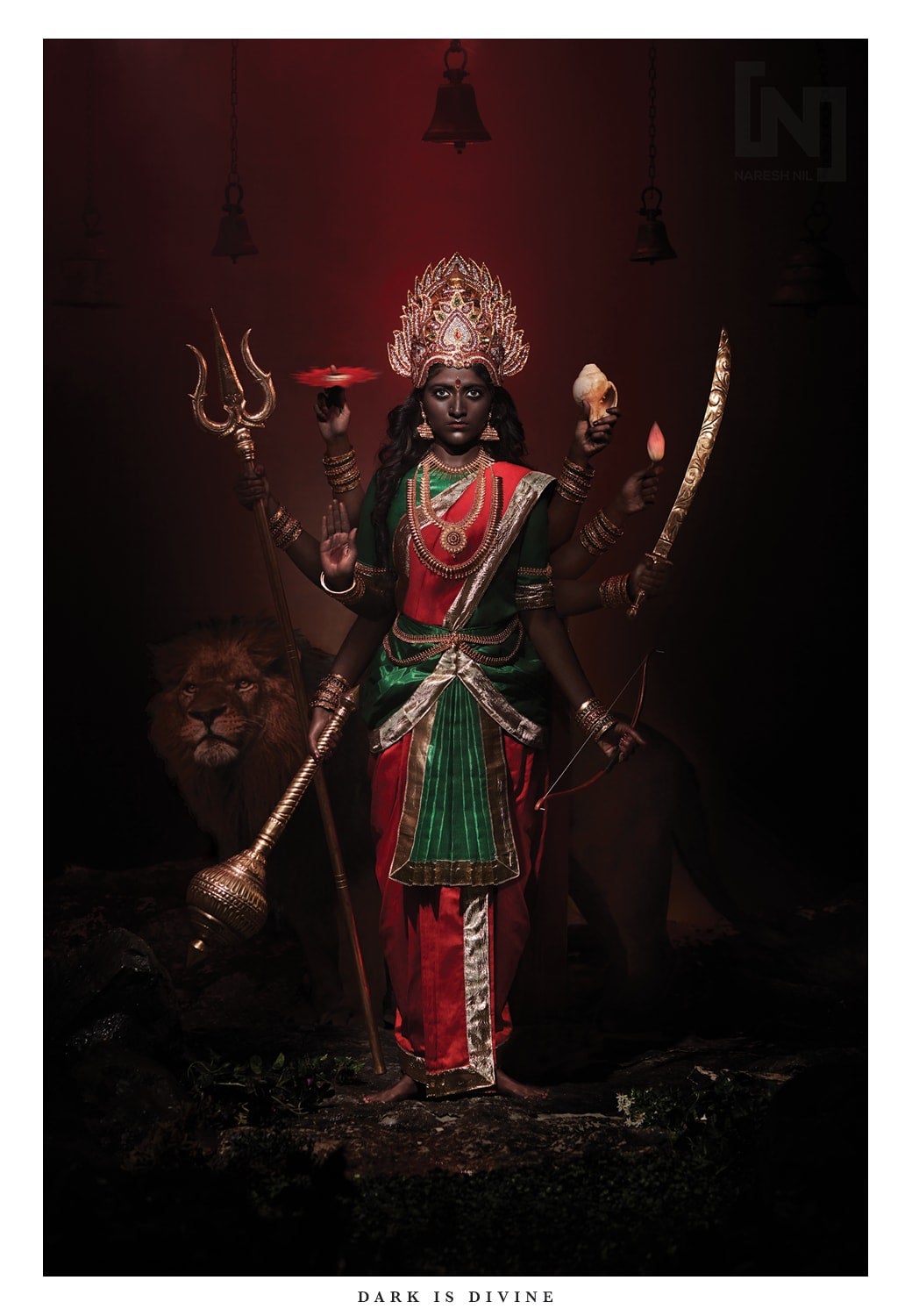
The Dark is Divine photographic project was something that Nil and Sundar had talked about a few times and in September, they decided they would try and shoot it. “Of course we realised that this was related to more deep-rooted issues of preference for fair skin in our society and that we were challenging the common notions of purity and divinity. These additional thoughts were incorporated during implementation and the shoot.”
In a 2015 paper, titled India and Colorism: The Finer Nuances, published in the Washington University Global Studies Law Review, the author Neha Mishra writes:
“Most Indians show apparent ignorance about the practice of exclusion and discrimination based on the skin tone of a person although it is a deep-rooted problematic practice embraced by both the oppressor and the victim. This single practice has become so widespread in India, more so in the past four decades, that it has taken shape along the same lines as “colourism” of the Western world. However, the manifestation of the color discrimination in India differs as it hides behind various other variables…Caste, class, religion, region, gender and economics are a few of these variables.”
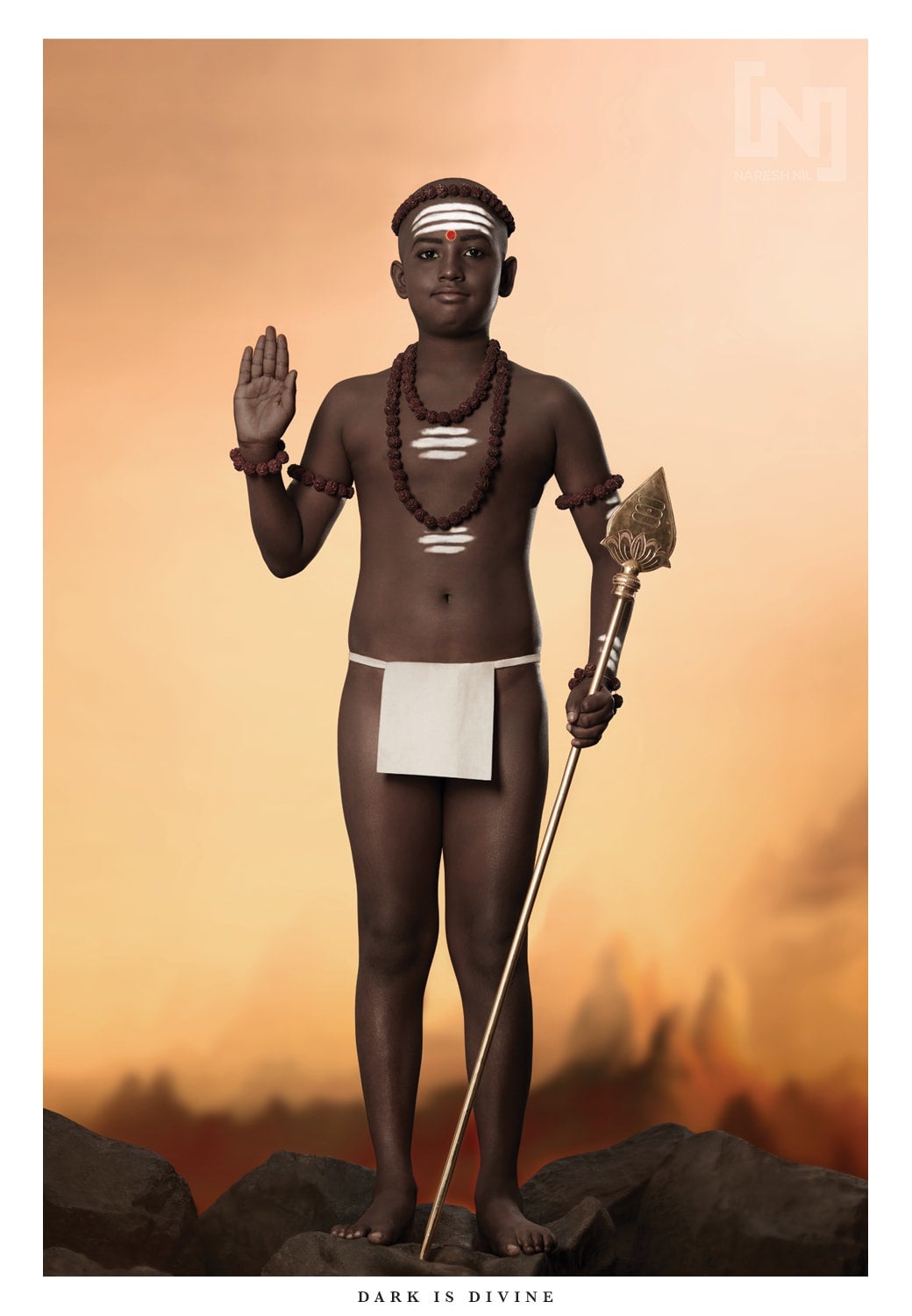
The costumes and jewellery during the shoot of Dark is Divine were inspired to an extent by artist Raja Ravi Varma’s paintings. “Our focus was plain and simple, how are gods or divinity presented in common culture, and by common we mean our immediate surroundings, whatever we come across in our everyday life,” said Nil.
While the reactions to the images on Nil’s Facebook page have been mostly positive, there are a few who have argued that the portrayal of goddess Kali and Kalratri as dark-skinned in popular culture makes his project a biased one. “The initiative is a creative endeavour based on our own observations in our everyday life—plain and simple,” said Nil. “We don’t intend to be biased, nor have we set out to interpret how literature portrays God. Everyone is entitled to their opinion, but what would be fantastic is if we start seeing opinions materialising into new and varied work for people to see and understand. That is what we have done with our ideas.”
This post first appeared on Scroll.in. We welcome your comments at [email protected].